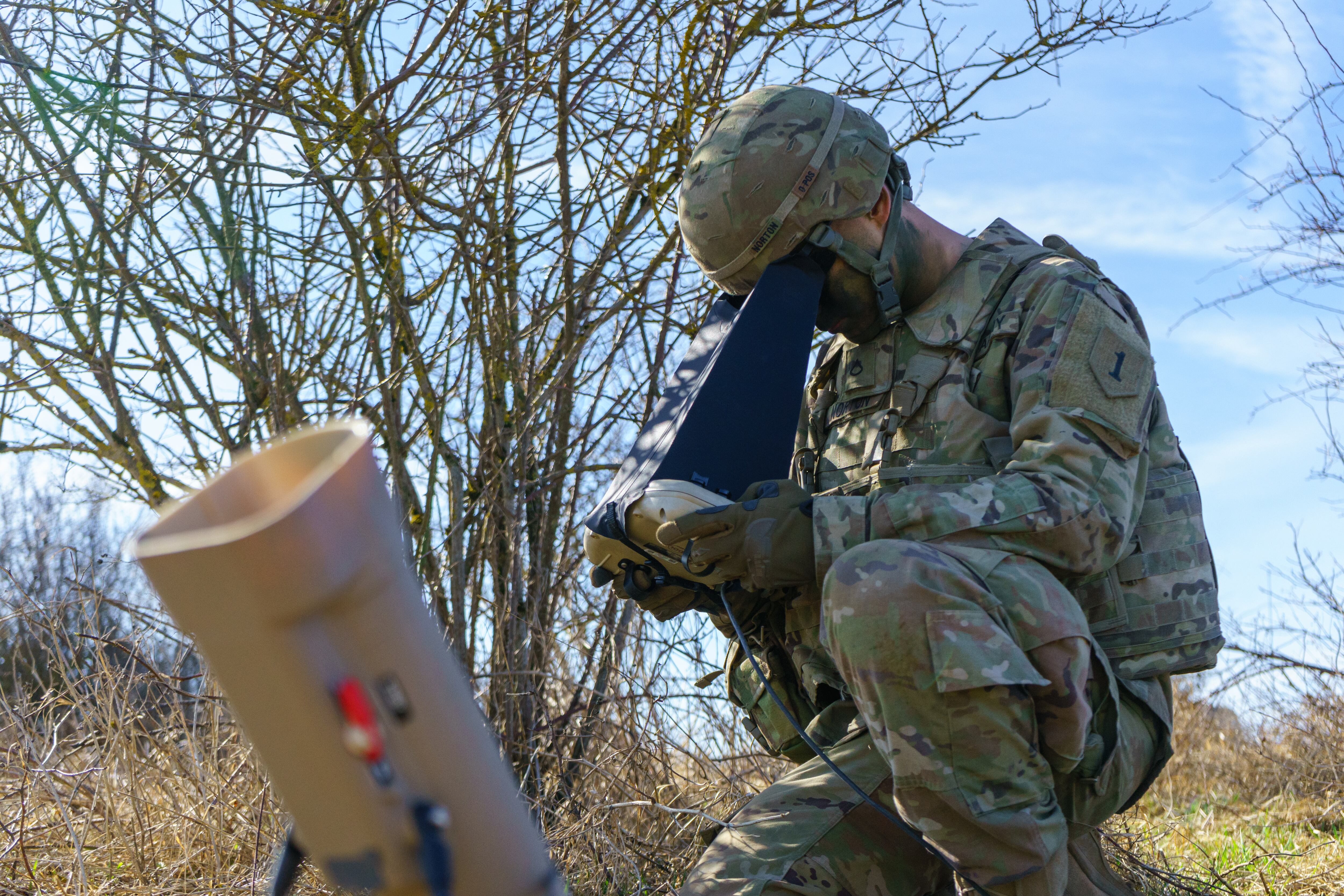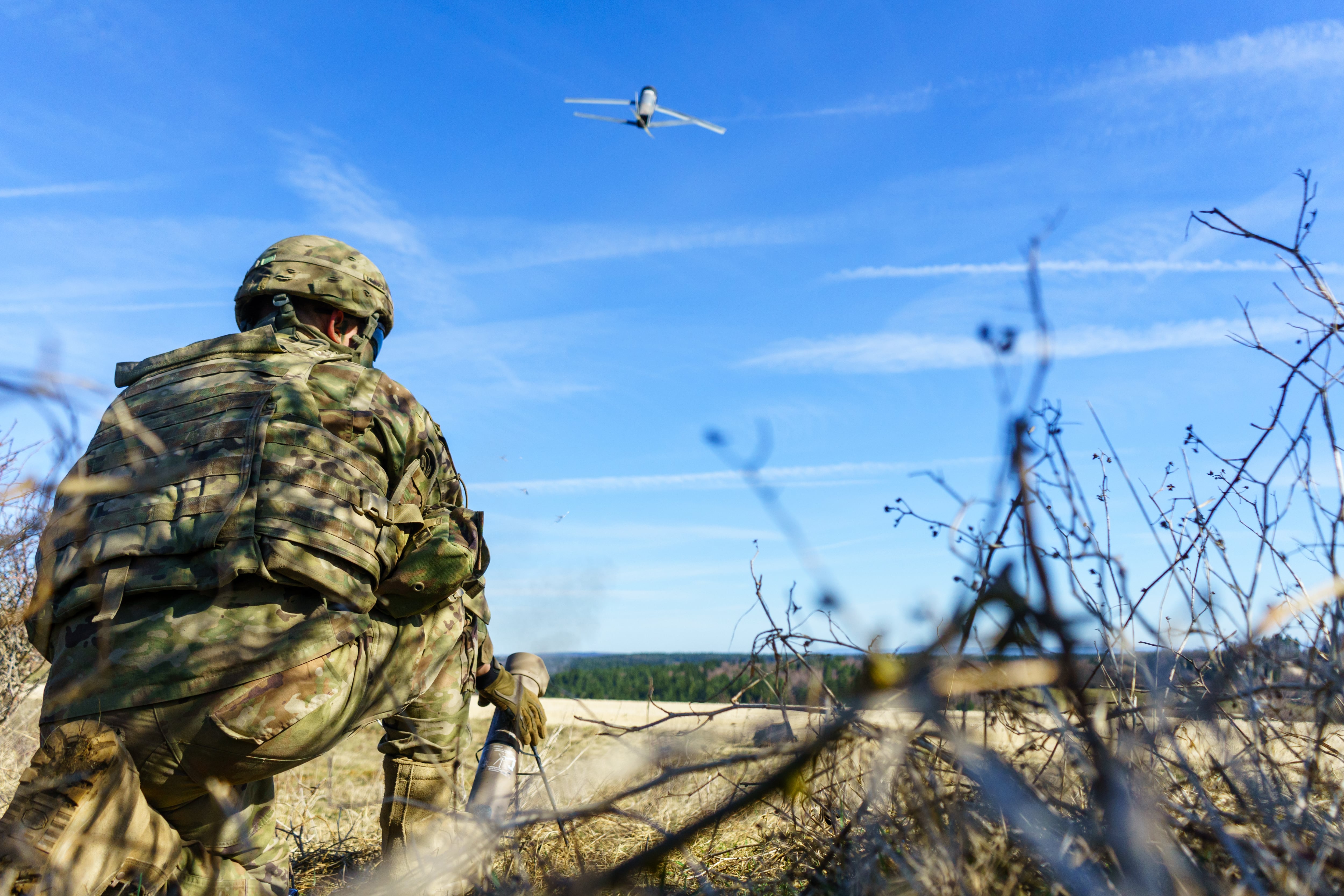The Army wants to give individual soldiers a shoulder-launched loitering munition, or suicide drone, that can hover for 15 minutes or more beyond line of sight and hit targets as far as 20 kilometers away.
Army Contracting Command posted a request for information on the government website fbo.gov this week seeking industry input into the Lethal Miniature Aerial Missile System, or LMAMS. They’re trying to find a low-cost solution for filling an urgent operational requirement, according to the post.
Though it would be a new capability and a higher-level weapon in the hands of squad-level soldiers, it is not a brand new item in the arsenal.
Soldiers have used versions of loitering munitions at training exercises in Germany and they’ve also been deployed operationally in Iraq and Syria.
The eventual LMAMS must include an “all-up-round missile,” basically a missile that’s ready to go out of the box with the warhead, data link, guidance, sensor and launcher in one set.
The only other piece of gear would be the fire control unit that the soldier would use to both guide the missile and view it as they select and destroy a target using full motion video feedback.
The Army wants its soldiers to be able to select predetermined targets but also identify targets while scanning the area, have the drone loiter when needed and abort missions and redirect the device.
Users would be able to put in their own targeting data but also take information from sensors or through a network of sensors.

But once it’s time to go, a missile must hit its target without any more help.
“LMAMS must have the ability to automatically lock on and track a stationary or moving target,” according to the post. “Once a target is selected by the operator in the terminal phase of engagement, no further operator input shall be required.”
They’re not asking for it to be able to destroy everything on the battlefield, only personnel and light-duty vehicles.
And, if it isn’t fired, the LMAMS needs to be recoverable.
Industry isn’t going to build this from scratch, either.
The Army’s Combat Capabilities Development Command has already put together some of the technical aspects and is expected to provide the documents and/or the software to build, integrate and test the final product, according to the release.
The Army’s not alone in this effort.

The Marines recently decided to ditch their 120mm Expeditionary Fire Support System and instead are focusing efforts on developing loitering munitions, or suicide drones, to replace that piece of firepower and add more capabilities.
Current industry versions, such as the UVision Hero 120 drone, can carry the Javelin multipurpose warhead.
It can fly for an hour at a 40 km range, exceeding the current requirements of the LMAMS posting, according to Marine Corps Times reporting last year.
Like the Army, the Corps has put emphasis on “minimal operator burden,” meaning the user can rely on features in the system to help with guidance and flight so they’re not overloaded while facing real time combat and simultaneously piloting the drone to its target.
Todd South has written about crime, courts, government and the military for multiple publications since 2004 and was named a 2014 Pulitzer finalist for a co-written project on witness intimidation. Todd is a Marine veteran of the Iraq War.




